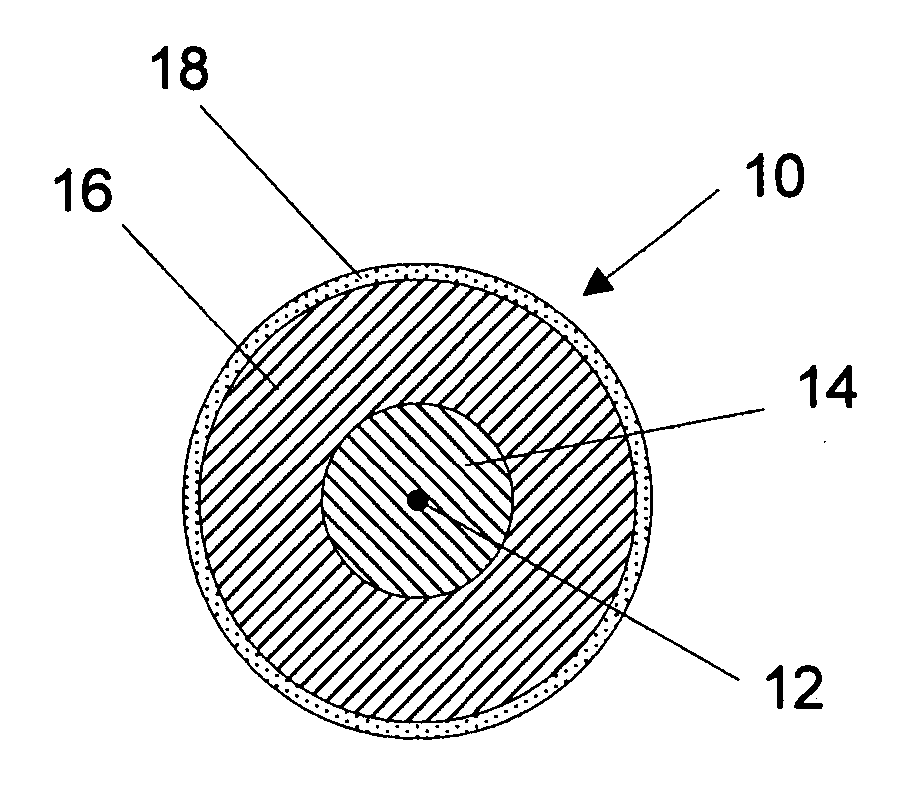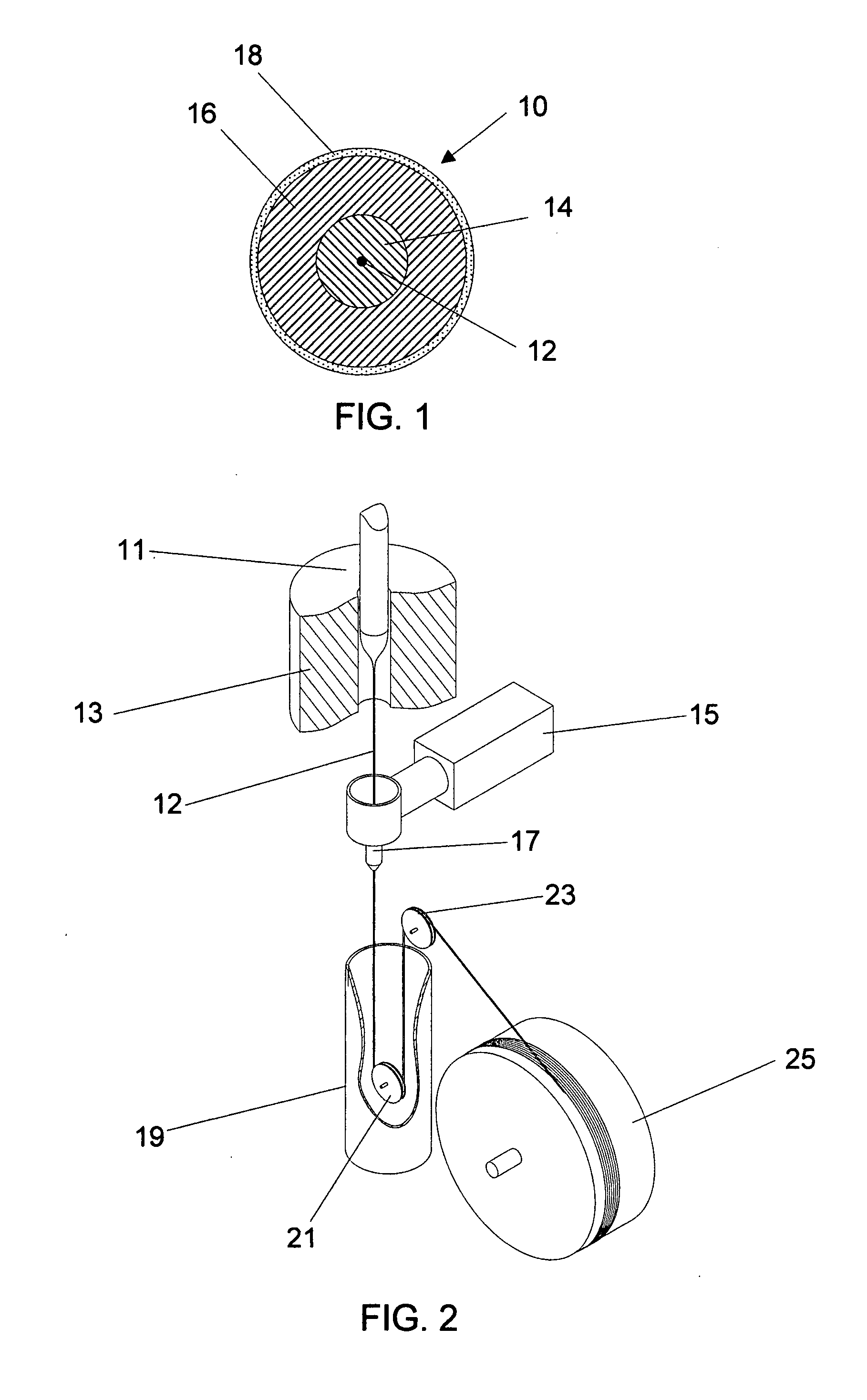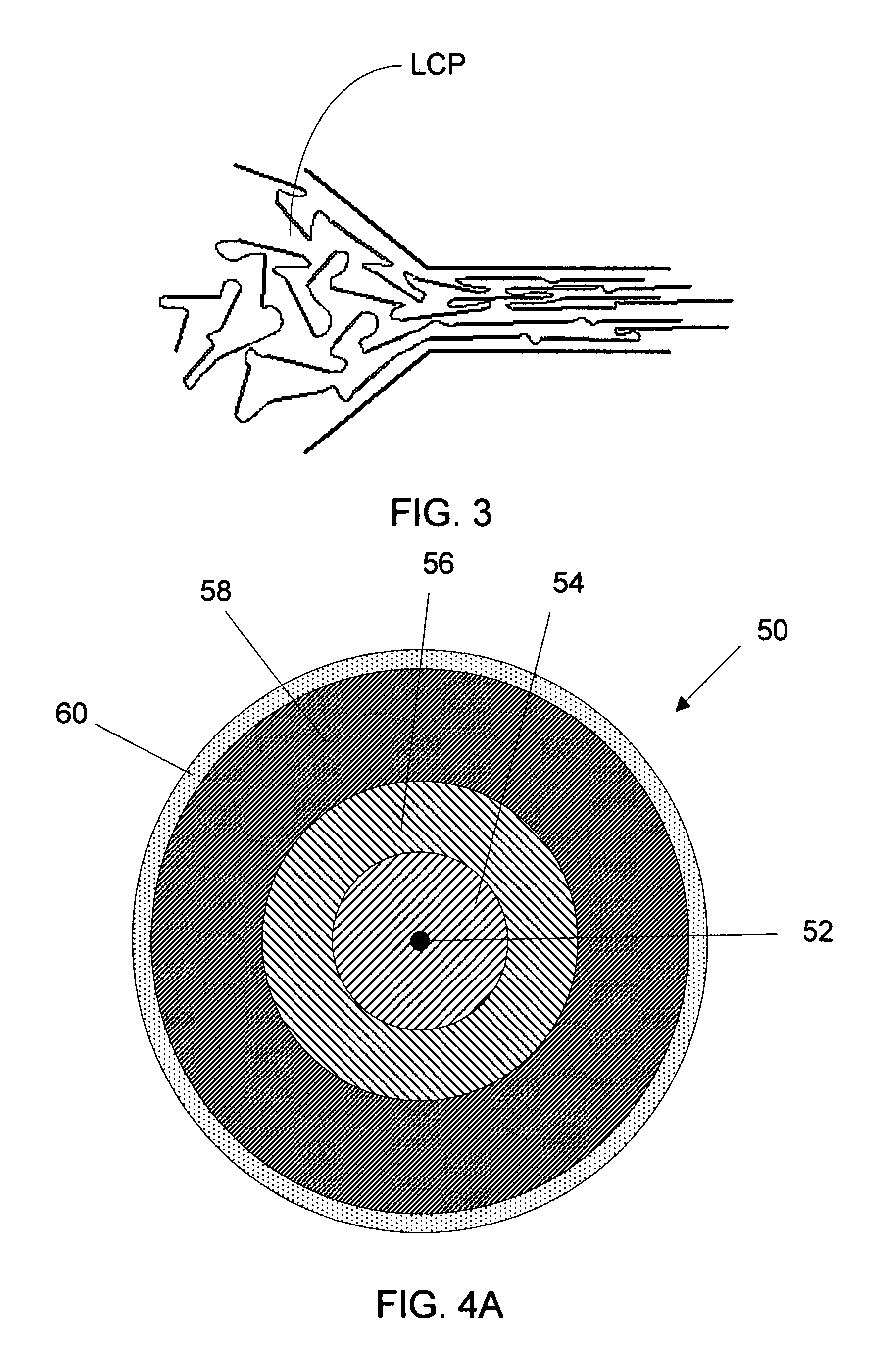Environmentally robust liquid crystal polymer coated optical fiber cable and its use in hermetic packaging
a liquid crystal polymer coated, optical fiber technology, applied in the direction of cladded optical fibre, glass optical fibre, instruments, etc., can solve the problems of inability to make hermetic seals to these claddings, inconvenient removal of cables, and poor tensile strength of cables, etc., to achieve easy removal, enhance the tensile strength and moisture resistance of cables, and reduce the effect of tensile strength and moisture resistan
- Summary
- Abstract
- Description
- Claims
- Application Information
AI Technical Summary
Benefits of technology
Problems solved by technology
Method used
Image
Examples
Embodiment Construction
[0040] The invention relates to high-strength, abrasion-resistant optical fiber cable having a supplemental layer consisting essentially of a liquid crystal polymer (LCP) to enhance the cable's tensile strength, hermetically seal it, and provide interfacing and an outermost encasing layer to protect the supplemental layer from damage that could otherwise diminish the properties of the cable gained by adding the supplemental liquid crystal polymer layer. The encasing layer is preferably a thin layer of a smooth, non-crystalline thermoplastic that can be easily removed with chemicals that will not affect the properties of the supplemental layer so that the supplemental layer can be made accessible for promoting the formation of hermetically sealed interfaces between the cable and other structures. Methods for hermetically sealing packaging are also provided.
[0041] Reference is now made to FIG. 1 which shows the cross-sectional shape of a high-strength, abrasion-resistant optical fibe...
PUM
| Property | Measurement | Unit |
|---|---|---|
| mass fraction | aaaaa | aaaaa |
| wavelength | aaaaa | aaaaa |
| wavelength range | aaaaa | aaaaa |
Abstract
Description
Claims
Application Information
 Login to View More
Login to View More - R&D
- Intellectual Property
- Life Sciences
- Materials
- Tech Scout
- Unparalleled Data Quality
- Higher Quality Content
- 60% Fewer Hallucinations
Browse by: Latest US Patents, China's latest patents, Technical Efficacy Thesaurus, Application Domain, Technology Topic, Popular Technical Reports.
© 2025 PatSnap. All rights reserved.Legal|Privacy policy|Modern Slavery Act Transparency Statement|Sitemap|About US| Contact US: help@patsnap.com



